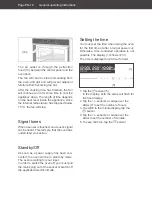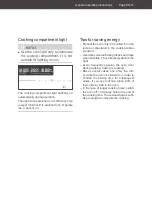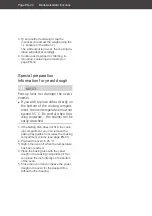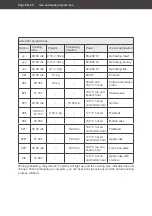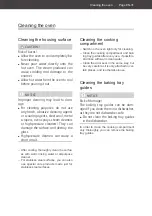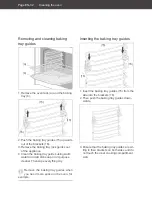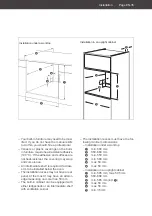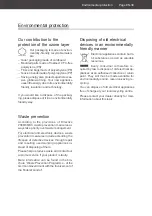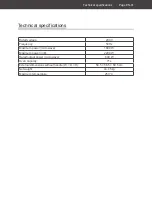
Practical tips for microwave mode
Page EN-29
The correct cooking time
Given that microwaves react with varying in-
tensity to water, fat and sugar, the cooking
time depends significantly on the composition
of the dish.
• Dishes with a high fat or sugar content
(doughnuts, puddings, fruitcakes) cook
through more quickly and reach higher
temperatures faster than other dishes.
Please ensure to comply with the recom-
mended cooking times, as the dishes may
otherwise burn and the appliance can be-
come damaged.
• Dishes that have a high water content
(fish, vegetables, sauces) cook faster
than ‘dry’ dishes.
• ‘Dry’ dishes (rice, grain products, dried
beans) cook very slowly. Please add a
little water here before cooking.
The correct quantity of food
The larger the quantity to be prepared, the
longer the cooking time. If, for example, a po-
tato takes 4 minutes, then two potatoes will
take 7 minutes.
Rule of thumb: Twice the quantity requires
approximately twice the amount of time.
• Small food items cook more quickly than
large food items. And food items of equal
size cook through more evenly than
food items of different sizes. Whenever
possible, portion the foodstuff into equal
amounts. Be sure to consider this when
freezing food down.
• When defrosting, size and form play a key
role. Small, flat food portions defrost faster
and more evenly than larger, thicker food
portions. Separate the defrosting parts dur-
ing the defrosting process, as this allows
the food to defrost more quickly.
Order of dishes
In order to achieve an equally thorough cook-
ing result, the correct arrangement of the dish
must be observed:
• Arrange dishes containing several identi-
cal elements (potatoes, meatballs, ham-
burgers) in a circle within the container,
and leave the middle section free.
• When working with food of different sizes,
place the smaller or thinner pieces in the
middle, as they are cooked less intensive-
ly there.
• When cooking unevenly shaped food
(e.g. fish) place the flatter or end part to-
wards the middle.
• Lie thin slices of meat on top of one an-
other or in a criss-cross fashion.
• Place the thicker slices and pieces of meat
(roast, sausages etc.) close together.
• Please heat any meat juice or sauces in a
separate container. Only fill it to ⅔.
Piercing and scoring
Excess pressure can be caused in many
dishes when heating them through. It is there-
fore recommended to pierce or score certain
dishes in order to prevent them from bursting.
• Shellfish, seafood and eggs in their shells
can burst easily when exposed to mi-
crowaves. This can be avoided by using
specific cooking containers for these food
stuffs, which are available from specialist
retailers.
• Please ensure to pierce any dishes con-
taining shells or skins (e.g. potatoes, to-
matoes, sausages, aubergines, egg yolk),
in order to avoid them bursting.
• Please ensure to score the skin of the en-
tire fish, in order to avoid it bursting open.
Practical tips for microwave mode
Summary of Contents for 6467 5200
Page 42: ...Technische Daten Seite DE 42 ...
Page 84: ......


